This article was co-authored by Michele Dolan and by wikiHow staff writer, Jennifer Mueller, JD. Michele Dolan is a BCRPA certified Personal Trainer in British Columbia. She has been a personal trainer and fitness instructor since 2002.
There are 18 references cited in this article, which can be found at the bottom of the page.
This article has been viewed 47,057 times.
According to the Centers for Disease Control and Prevention, more people die each year from blood clots than from breast cancer, HIV, and car accidents combined. Certain factors, such as age, weight, and overall health, can put you at greater risk for getting a deep vein thrombosis (DVT) or blood clot.[1] Left untreated, a piece of the blood clot can break off and move to your lung, causing a pulmonary embolism. You can exercise to prevent blood clots, primarily by walking regularly and stretching your legs, feet, and ankles to improve circulation.[2]
Steps
Preventing Blood Clots while Traveling
-
1Stretch and move your legs frequently. Particularly if you're traveling a long distance, make sure you take breaks to stretch your legs and keep the blood flowing. You can do stretches while seated or by standing in place beside your seat.[3]
- One exercise you can do in the aisle or while seated is to extend one leg straight out in front of you. Flex your ankle, pulling your toes towards you. Hold this position for a few seconds, then release. Repeat several times, then do the same thing with your other leg.
- Pull one knee up towards your chest while seated. Hold it for 15 seconds, then release. Do the same thing with your other leg. Do up to 10 reps at a time to increase circulation to your legs.
- Stretch the top of your foot and shin while standing. Cross your left ankle over your right ankle, pointing the toes on your left foot to the right. Bend your right knee and hold for 15 to 30 seconds, then switch.
- Open your hips (if you have room) from a seated position. Take your legs wide and place your elbows on your thighs, leaning forward. Gently press forward until you feel the stretch in your thighs. Hold for 10 to 30 seconds.
- On a plane, check the seat-back magazines and brochures for exercises recommended by the airline.
-
2Get up and move around. Whether you're traveling by train, plane, or automobile, long-distance travel involves a lot of sitting. When you sit, you decrease circulation in your legs — especially if you sit with your legs crossed or with one foot under you.[4]
- If you're on a plane, try to get an aisle seat so you can get up and move around more easily.
- Ideally, you want to get up and stretch your legs or walk up and down the aisle once every hour or so.
- While sitting, keep your feet directly in front of you or stretch them under the seat or into the aisle when you can, rather than crossing your legs.
Advertisement -
3Exercise your feet and ankles while seated. In addition to walking the aisle occasionally, there are exercises you can do to improve circulation in your legs and keep your feet and ankles active without moving around too much or disturbing other passengers.[5] [6]
- Clinching and widening your toes increases blood flow to your feet, as does circling each foot clockwise and counterclockwise at the ankle.
- Press hard on the floor with the balls of your feet, keeping your leg muscles active. This increases blood circulation throughout your leg.
- Wear loose-fitting clothing and shoes you can slip on and off while traveling. This will enable you to stretch and move more easily.[7]
-
4Stop at least once an hour if you're driving. You may not think of the potential to get a blood clot while you're in a car, because you have more power over the situation than you do if you're in a plane or other public transportation. But the risk is similar if you're seated for a long period of time.[8]
- On long-distance road trips, you may feel the pressure to "make good time" and reach your destination as quickly as possible.
- To prevent blood clots, however, it's important to stop frequently so you can stretch your legs and walk around for a bit to bring the circulation back.
- You don't have to make an extended stop. Five minutes at a rest area is sufficient to get the blood flowing again.
- Combine your exercise stops with regular road-trip stops to be more efficient. For example, if you have to stop to fuel up, walk around your car while the gas is pumping.
-
5Identify factors that put you at increased risk for blood clots. While anyone can get a blood clot, there are particular factors that increase this risk. People who get blood clots while traveling typically have one or more of these risk factors present:[9]
- Surgery or injury in the past three months, especially if it results in limited mobility (such as a cast on your leg)
- A personal or family history of blood clots
- Obesity
- Smoking
- Over 40 years of age
- Hormonal variations, including use of contraceptives, hormone replacement therapy, or pregnancy
-
6Recognize the symptoms of clotting. Especially if you have an increased risk of developing a blood clot, you need to know what to look for so you can seek treatment immediately before the situation becomes life-threatening.[10]
- If you notice swelling in a leg or arm, this could indicate you have a blood clot, particularly if only one leg or arm is swollen, but the other appears fine.
- Skin around the blood clot may be red, warm to the touch and painful or tender.
- Even if there isn't any swelling or redness, if you feel pain in your leg or arm that you can't explain, you might have a blood clot.
- If you notice a fast or irregular heartbeat, chest pain, difficulty breathing, or lightheadedness, you may have a pulmonary embolism. Seek medical treatment immediately.
Exercising after Surgery
-
1Consult a physical therapist or personal trainer. Before your surgery, talk to a fitness professional who has experience working with people recovering from the same type of surgery. They can help you come up with an exercise plan that will best suit your body and your needs.[11]
- For example, if you've been diagnosed with breast cancer and are having a mastectomy, speak to a physical therapist or certified personal trainer who has worked with breast cancer survivors.
- Your doctor should be able to provide a recommendation of experienced and reputable professionals who can help you get your exercise program on the right track after your surgery.
- If you already have an exercise routine that you enjoy, feel free to continue it up to the day of your surgery — provided you have the energy to do so.
- Have the physical therapist or personal trainer evaluate your existing exercise routine. They can give you advice and show you modifications that will allow you to work the exercises you enjoy into your post-surgery routine.
-
2Allow time to heal. The length of time your body will need to heal after surgery will vary depending on the type of surgery you've had. Any average healing time also varies according to your age, overall health, and other personal factors.[12]
- Maintaining good circulation is essential to preventing blood clots after surgery; however, you typically need at least three or four weeks to recover from any major surgery before you can begin a whole body exercise program.
- If your surgery is local to a particular part of your body, you may be able to start exercises that work out other parts of your body while healing.
- For example, if you had surgery on one of your legs, you may be able to do upper body strength training exercises.
-
3Get your doctor's permission. After surgery, talk to your doctor or surgeon before you start any exercise program. Even light or moderate exercise can result in complications that interrupt your healing process or put you at even greater risk for blood clots.[13]
- Describe in detail the exercises you want to do and make sure they won't impede your healing after surgery.
- Your doctor also will give you a list of any limitations on your movement following surgery. Some limitations, such as limitations on the amount of weight you can lift, would affect your ability to do strength-training exercises.
- Tell your doctor that your goal is to do exercises that will prevent blood clots. They may have additional exercises they can recommend that will help you.
-
4Start with stretching exercises. Stretching exercises often can begin within days after surgery. These exercises are designed to improve circulation, particularly in the area around the surgery, and decrease scar tissue.[14]
- These stretching exercises typically are centered around the area of your surgery. For example, if you had a mastectomy for breast cancer, you can begin exercising by raising the arm on the same side as your surgery above your head. Open and close your hand 15 to 20 times with your hand over your head. Then bend and straighten your elbow for the same number of repetitions.
- This and other exercises are designed to drain lymph fluid, reduce swelling, and increase circulation to the areas of your body affected by the surgery.
- Your physical therapist may have a list of daily stretching exercises you're expected to do.
- Often physical therapy exercises are boring and repetitive. If you have the ok from your physical therapist, feel free to augment the prescribed stretches with other activities that exercise the same range of motion and you enjoy doing.
-
5Walk every day to keep active. Within a few weeks following your surgery, you should be able to take short, brisk walks. This allows you to return to physical activity gradually and get some cardiovascular exercise that can improve circulation and prevent blood clots.[15]
- Don't expect to be able to quickly return to the same level of activity you could do before surgery. You're in recovery, and your body is using its energy to heal.
- Start with the lowest intensity possible, and gradually work your way up. For example, on your first day walking, you may want to walk for five minutes.
- Stay at five minutes until you feel comfortable increasing the duration to six minutes. Increase duration slowly and stay at the same level for several days before increasing the duration or intensity again.
- If you have difficulty breathing or feel pain or tightness in your chest, stop immediately.
Exercising after a DVT
-
1Perform leg lifts. Even when you're recovering from surgery or other treatment for a DVT, it's possible to do leg lifts while lying in bed. Leg lifts will improve the circulation in your leg and help prevent further blood clots.[16] [17]
- To perform leg lifts in bed, lay on your back with your legs straight out in front of you. Raise your leg a few inches off the bed, breathing deeply as you hold it for a few seconds.
- Then lower your leg in a controlled movement — don't simply drop your leg to the bed, but lower it at roughly the same speed as you raised it. Or, if you feel strong enough, lower the leg very very slowly. Just remember to keep breathing — do not hold your breath.
- Repeat this exercise 10 to 20 times with each leg. Try to do this exercise three or four times a day.
-
2Give yourself time to recover. Particularly if you've had surgery for your DVT, it's important to give your body adequate time to heal. Even if your DVT was treated without surgery, recognize that you are now at increased risk for another blood clot.
- If you had surgery, you typically will need several weeks to recover before you can start doing more vigorous exercising.
- However, your doctor usually will advise you to do what you can to start being active again as soon as possible.
- This typically includes bed rest for about an hour, and then brief walking for a few minutes before returning to bed rest.
- Your doctor may give you additional exercises to improve the circulation in your legs.
-
3Work with a physical therapist. If you had surgery for a DVT, a physical therapist will provide you a list of exercises you can safely do that will improve your circulation and help restore your strength and range of motion.[18]
- Get the physical therapist's approval before you deviate from these exercises.
- Keep in mind that exercising too strenuously following a DVT puts you at risk for another blood clot.
-
4Try swimming. Swimming is a low-impact way to get a full-body workout that improves circulation while also giving you a cardiovascular workout. Even if you don't think you're a strong enough swimmer to swim laps, hanging off the side of the pool and kicking can help improve circulation in your legs.[19]
- Be careful not to overdo it. The low-impact nature of swimming means you may not realize you're going too hard until the soreness hits the next day.
- Get permission from your doctor or physical therapist before you begin a swimming program, even if you only anticipate being in the water for a few minutes a day.
-
5Stand at least once an hour and walk at least once every two hours. Even once you're out of the recovery period following a DVT, you're still at increased risk for developing another blood clot. If you are going to be traveling or have a sedentary job, it's important to stay as active as possible.[20]
- If you're at work, set an alarm or timer to go off each hour. When the alarm goes off, stand up and move around for a few minutes to get the blood moving in your legs.
- Every other hour, take a brisk walk around the office or outside. You can also do jumping jacks or jog in place. This will get your heart rate up and improve circulation to prevent blood clots.
- Try to stay active throughout the day. This can be difficult if you have a sedentary job, but focus on standing as much as possible.
- For example, you might stand or pace while you're talking on the phone, rather than sitting at your desk.
Expert Q&A
-
QuestionHow can I stay in shape while traveling?
 Kevin RichardsonKevin Richardson is a Celebrity Personal Trainer and the Founder of Naturally Intense Personal Training based in New York, New York. With over 30 years of experience, Kevin specializes in helping busy people achieve their fitness goals with his time-saving Naturally Intense High Intensity 10 Minute Workouts. Kevin is an International Fitness Consultant for UNICEF and one of the top lifetime natural bodybuilding champions. He is also a five-time winner of the Best of Manhattan Awards for Personal Training (2017, 2016, 2014, 2013, 2012). Kevin has been featured on CBS News and in the Wall Street Journal.
Kevin RichardsonKevin Richardson is a Celebrity Personal Trainer and the Founder of Naturally Intense Personal Training based in New York, New York. With over 30 years of experience, Kevin specializes in helping busy people achieve their fitness goals with his time-saving Naturally Intense High Intensity 10 Minute Workouts. Kevin is an International Fitness Consultant for UNICEF and one of the top lifetime natural bodybuilding champions. He is also a five-time winner of the Best of Manhattan Awards for Personal Training (2017, 2016, 2014, 2013, 2012). Kevin has been featured on CBS News and in the Wall Street Journal.
Celebrity Personal Trainer One of the things that I would do myself back when I was younger and traveling, back in the days when I was traveling, hotels didn't have gyms the way they do today. So, whenever I went on vacation, I had to work out with whatever I had and what I would usually do is use a lot of plyometrics. And plyometrics are explosive movements. And in explosive movements, you get more bang for your buck than you would in an ordinary movement. So, for example, things like vertical jumps where you squat down, jump as high as you can, and come back down and keep on going.
One of the things that I would do myself back when I was younger and traveling, back in the days when I was traveling, hotels didn't have gyms the way they do today. So, whenever I went on vacation, I had to work out with whatever I had and what I would usually do is use a lot of plyometrics. And plyometrics are explosive movements. And in explosive movements, you get more bang for your buck than you would in an ordinary movement. So, for example, things like vertical jumps where you squat down, jump as high as you can, and come back down and keep on going.
References
- ↑ https://www.stoptheclot.org/blood-clot-information/blood-clots-in-the-united-states/#:~:text=100%2C000%20to%20300%2C000%20deaths%20from,and%20motor%20vehicle%20crashes%20combined.
- ↑ https://www.cdc.gov/ncbddd/dvt/facts.html
- ↑ https://www.stoptheclot.org/travel/in-flight-fitness/
- ↑ https://columbiasurgery.org/news/2019/02/27/how-avoid-blood-clots-when-flying-advice-vascular-surgeon
- ↑ https://www.uofmhealth.org/health-library/hw113606
- ↑ https://www.stoptheclot.org/travel/in-flight-fitness/
- ↑ https://www.nhs.uk/live-well/healthy-body/prevent-dvt-when-you-travel/
- ↑ https://www.mottchildren.org/health-library/abk8826
- ↑ http://www.cdc.gov/ncbddd/dvt/travel.html
- ↑ https://my.clevelandclinic.org/health/diseases/17675-blood-clots
- ↑ https://www.cancerresearchuk.org/about-cancer/breast-cancer/treatment/surgery/after-surgery/exercises-after-mastectomy-or-lumpectomy
- ↑ https://www.ncbi.nlm.nih.gov/pmc/articles/PMC4827369/
- ↑ http://www.breastcancer.org/tips/exercise/treatment/surgery
- ↑ http://www.breastcancer.org/tips/exercise/treatment/surgery
- ↑ https://www.oakbendmedcenter.org/why-is-ambulation-important-to-recovery/
- ↑ http://orthoinfo.aaos.org/topic.cfm?topic=a00219
- ↑ https://www.youtube.com/watch?v=EYPs4NLREno
- ↑ http://orthoinfo.aaos.org/topic.cfm?topic=a00219
- ↑ https://orthoinfo.aaos.org/en/recovery/activities-after-hip-replacement/
- ↑ https://www.oakbendmedcenter.org/why-is-ambulation-important-to-recovery/
- ↑ https://ashpublications.org/hematology/article/2005/1/452/19294/Inherited-Risk-Factors-for-Venous-Thrombosis
- ↑ https://pubmed.ncbi.nlm.nih.gov/20614425/



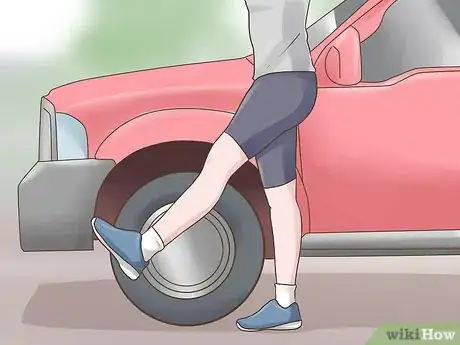


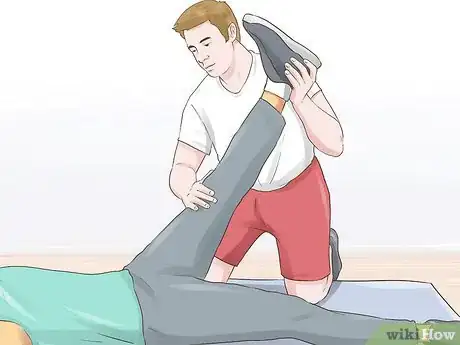
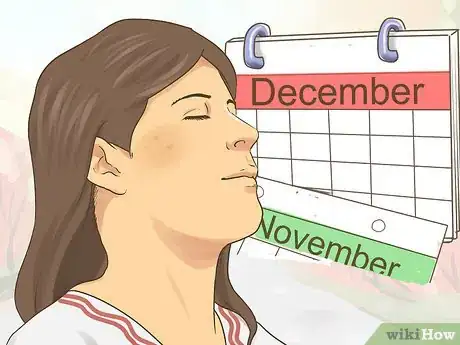
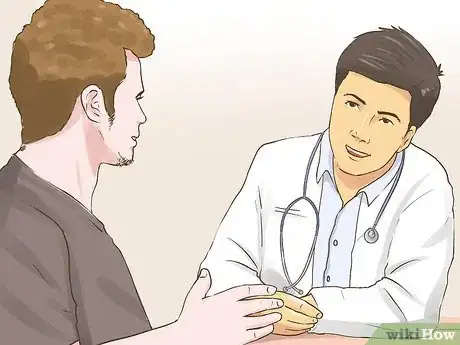
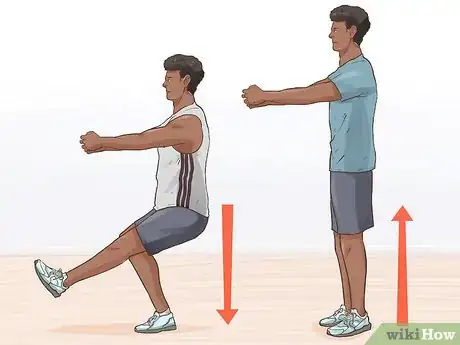
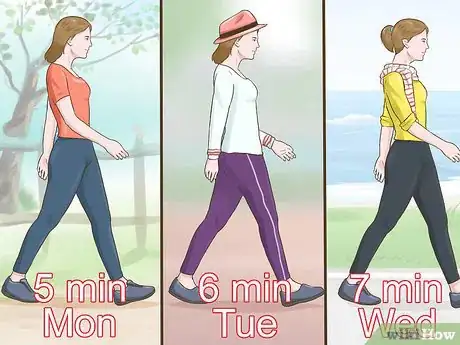
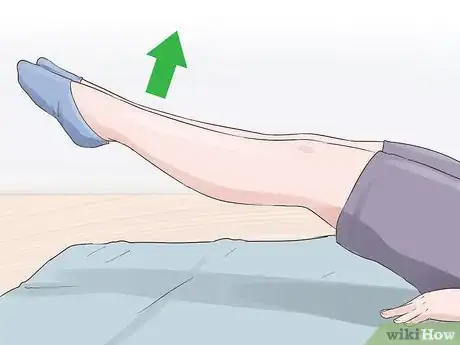
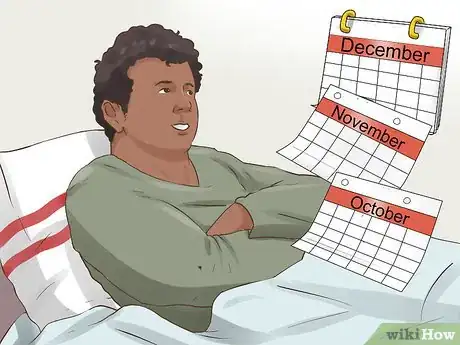
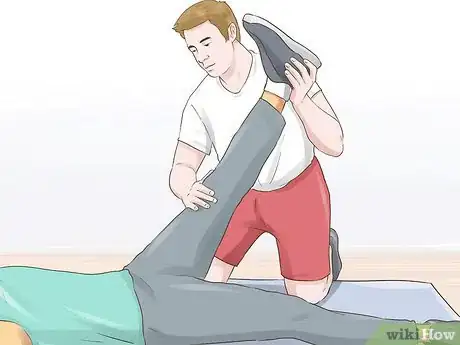









-Step-13.webp)
-Step-16.webp)
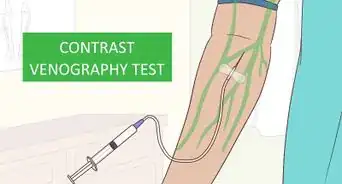
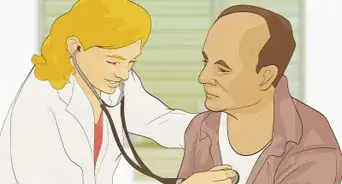
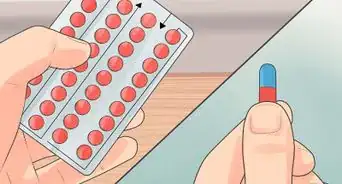








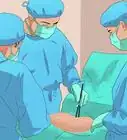






































Medical Disclaimer
The content of this article is not intended to be a substitute for professional medical advice, examination, diagnosis, or treatment. You should always contact your doctor or other qualified healthcare professional before starting, changing, or stopping any kind of health treatment.
Read More...